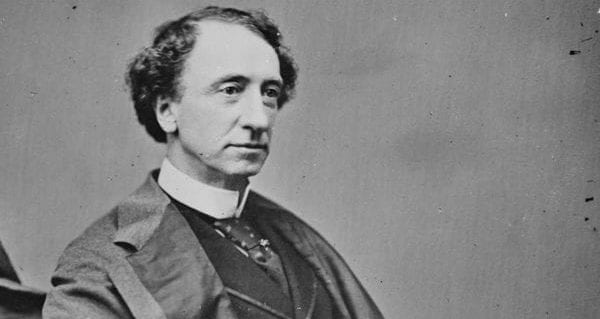 Looking for a bargain statue of Sir John A. Macdonald?
Looking for a bargain statue of Sir John A. Macdonald?
Victoria city council has removed just such a statue from City Hall, where it has stood for as long as anyone can remember. The intent is to promote reconciliation with Indigenous people.
This is but the latest of a series of attacks on Canadian historical figures. But the war on statues and plaques only makes sense to bewildered officials who believe that a rewriting of Canadian history will help “reconciliation.”
Macdonald is the greatest Canadian. He created a country where French and English live together – no small task. His vision included peoples from other parts of the world to settle and farm the West, with a railroad tying the country. Absent him, everything west of Ontario would be a northern extension of our troubled southern neighbour.
But Macdonald had flaws, and one of his mistakes involves Indigenous people.
By 1867, the Indigenous population had been laid low by disease, warfare and their rapidly disappearing hunting-and-gathering way of life. Particularly in the north and west, where the fur and buffalo economies were ending, they were poor, scattered and few. The Indigenous were of no importance to the new economy and were considered a minor obstacle to big plans.
Today’s critics of Macdonald suggest he was a racist and a bigot, and some of his words appear to reflect that. But by today’s standards, almost everyone then would be adjudged a racist and a bigot. It was a given that some groups of people were superior to others. Chinese workers and Ruthenian peasants were seen to be inferior to Anglo-Saxons. White supremacy was taken for granted, while Jews, Irish and Catholics were not to be trusted. Indigenous were somewhere near the bottom, with other brown-skinned people.
Such repugnant attitudes survived well into the 20th century. So if it makes sense to take down Macdonald’s statue, almost every statue that predates modern attitudes should go as well. Museums would have to hold fire sales.
The real racists and bigots of the day were content to do nothing and let the Indigenous simply disappear. Macdonald was not one of those. He represented the philanthropic, urging action to save a seemingly dying people by bringing them into western civilization. This applies to his part in the creation of residential schools as well. Set aside the rhetoric that today is considered racist and realize Macdonald wanted the Indigenous to learn English so they could survive in a new world. Today, successful Indigenous people are fluent in English or French.
It was not any speech, educational initiative or other action made by Macdonald that constitutes his great mistake involving the Indigenous. His great mistake was not opposing making special reference to the Indigenous in the British North America Act, making necessary the Indian Act and its dead-end reserve system.
The BNA Act could have made no reference to the Indigenous. But there was precedent for singling out Indians for special treatment – the Royal Proclamation of 1763. However, by 1867, the Royal Proclamation was outdated and Macdonald didn’t have to follow it. His government should have asked the British Parliament to omit any reference to the Indigenous population in the BNA Act, leaving Canada’s government in charge of land allotments and compensation, as was done in the United States, where Congress decides such issues. Instead, the Indigenous were included in the BNA Act, which led to the Indian Act and a reserve system that isolated and made dependent most of Canada’s Indigenous population.
While there were complications depending on geography and existing treaties that would have been dealt with, negotiations with Britain and Indigenous leaders leading up to Confederation would have had to sort these details out. The Indigenous would be ordinary Canadians in every respect.
Macdonald’s great mistake was not treating the Indigenous the way everyone else was treated.
Compensation would have been made to them as individuals and they would have adjusted. They had always adapted to new circumstances before. When the newly-chartered Rupertsland created opportunities in the fur business, the Indigenous adjusted and prospered. Same when a buffalo economy opened up. Same when the horse and gun were introduced from Europe. Some did better than others – that’s the way things work.
Instead, the Indigenous languished on reserves. The price was dependency and all of the social pathologies that inevitably flowed from it.
Today’s earnest statue removers are not in error when they say Macdonald made a great mistake. But the mistake was in not treating Indigenous people like everyone else.
Brian Giesbrecht is a retired judge and a fellow with Frontier Centre of Public Policy.
The views, opinions and positions expressed by columnists and contributors are the author’s alone. They do not inherently or expressly reflect the views, opinions and/or positions of our publication.


